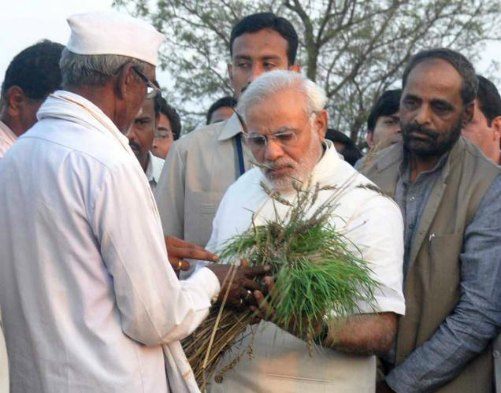The government is ready to launch PM-KISAN scheme under which Modi government will transfer direct benefit of 6,000 rupees per year for landholders up to 2 hectares. A per PM-KISAN scheme, the first tranche of 2,000 rupees will deposit in the bank accounts of 5.5 million farmers on February 24 when PM Modi will launch the scheme. More than 20 million farmers across the country have enrolled for the scheme. The beneficiaries of the scheme mostly come from BJP governed states as Congress-ruled states have sent very few names. The opposition-ruled states like West Bengal have not sent the names of farmers to the centre nor uploaded data for cash transfer. These states fear that BJP will reap political dividends from the launch if a large number of farmers in the state benefit from the PM-KISAN scheme. The Congress and TMC are sacrificing the interest of farmers of the state for electoral gains.
BJP ruled state of Uttar Pradesh has sent the highest number of names for the scheme. Yogi government has already collected the data about farmers to implement the loan waiver scheme. UP has a total of 7.1 million enrolments followed by Gujarat at 3 million and Maharashtra at 2.9 million. Other BJP governed states like Jharkhand, Himachal Pradesh and Assam have also listed a substantial number of beneficiaries.
In a farmer rally in Uttar Pradesh, PM Modi announced that the government aims to double farmer’s income by 2022. The Centre formed an 8 member inter-ministerial committee under Ashok Dalwai, Additional Secretary at the Union Agriculture Ministry to suggest steps to double farmer’s income. After the formation of the committee, the Modi government took various steps on its suggestions to solve farmer’s distress. In June 2016, Pradhan Mantri Fasal Bima Yojna (PMFBY) was rolled out to insure crops. The insurance scheme made farming as secure as any other profession. If crop suffers due to any reason like drought, excessive rain etc., insurers will pay the output price.
To provide irrigation facilities to farmers across the country, PM Modi launched Pradhan Mantri Krishi Sinchai Yojana (PMKSY) and pumped money into the National Bank for Agriculture and Rural Development (NABARD) to increase credit penetration to farmers. The steps taken by the government coupled with good monsoon proved beneficial for agriculture and the sector grew at 6.3 percent in 2016-17. However, growth moderated to 3 percent in 2017-18 due to the high base effect. In the first quarter of this financial year, agricultural growth was 5.3 percent compared to 3 percent in the same period of last year.
The government is trying to solve the post-production problem through incentivizing exports. As India produces more than it consumes, the price of agriculture produces crashes and this could not be solved without encouraging exports. The Modi government plans to introduce country-specific special agricultural produce zones to boost agricultural exports. The exports are already rising, in the FY 2018, the country exported agricultural commodities worth $ 38.74 billion, as against imports of $ 24.89 billion which resulted in a farm trade surplus of $ 13.85 billion. The surplus for 2016-17 and 2015-16 was $ 8.05 billion and $ 10.23 billion respectively.
